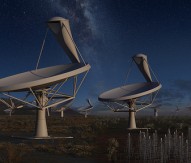
Galileo satellites in orbit
Two further Galileo satellites have been launched by the European Space Agency.
The move sees the doubling of the number of Galileo satellites in orbit within nine months and aids the deployment of Europe’s own satellite navigation system.
Galileo 11 and 12 lifted off together at 11:51 GMT on Thursday atop a Soyuz rocket from French Guiana.
Jan Woerner, director general of ESA, commented: “Along with the ground stations put in place around the globe, this brings Galileo’s completion within reach. Initial Galileo services are scheduled to begin within next year, which proves the importance of this wise investment.”
Looking ahead to future developments, Didier Faivre, ESA’s director of Galileo and navigation-related activities, said: “The excellent performance of these satellites, as measured on the ground, allows Europe to join the club of the world wide providers of satellite navigation services.
“Production, testing and launch of the remaining satellites are now proceeding on a steady basis according to plan. Then, after the summer break in 2016, the tempo of deployment will increase further with the first of three customised Ariane 5 launchers that will carry four rather than two satellites into orbit each time.”
December sees the tenth anniversary of the launch of Europe’s very first navigation satellite, GIOVE-A, which secured the frequencies set aside for Galileo, gathered data on the medium-altitude orbit environment and flight-tested hardware for the working system.




